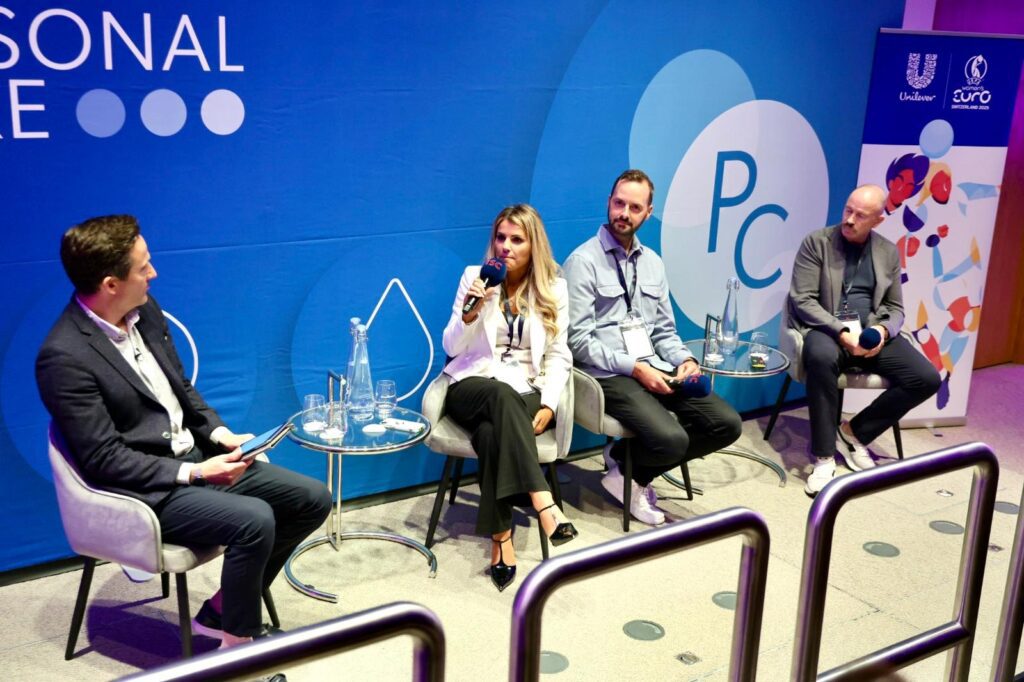Marina Purkiss, Senior Manager – Sport & Brand Partnerships UK And Adobe Women’s FA Cup Partnership Lead – Adobe
Marek Borowik, Director of Fan Engagement and Event Experience – SailGP
Jon Hewson, VP of Sales, EMEA – Genius Sports
Between its high emotional peaks and deep lifelong relationships, sport can help brands form enduring bonds with their target audiences.
But in a crowded environment, landing relevant and resonant messaging is often extremely difficult. As the final panel of the day at the 2025 ISC Brands and Sponsorship Summit explored, that is where the right fan engagement strategy can make all the difference.
Adobe’s sponsorship of the Women’s FA Cup is intended in no small part to change perceptions of the software giant. The company is keen to emphasise its positioning as an enabler of creativity through accessible, AI-powered tools – which in a football setting means empowering fans to express their support in their own way.
Marek Borowik is the Director of Fan Engagement and Event Experience at SailGP, now five seasons into its quest to redefine sailing. He views an active fan relationship – encouraging more and better data capture – as being central to that progress.
According to Genius Sports VP of Sales for EMEA, Jon Hewson, data can also transform perspectives on what brands are getting from their sponsorship. By capturing social noise and responses to events on the pitch, Genius Sports is working to measure what Hewson calls “emotional return on investment”. Through that process, rights holders can better understand what works about their events, and brands can better time their calls to action.
Too many sponsors, said Adobe’s Marina Purkiss, continue to “slap their logos” on sports properties without acknowledging storytelling or commercial prerogatives. Through its football sponsorships, Adobe wants to centre its products in the fan experience by allowing them to co-create – part of its bid to grow brand usage, rather than brand awareness.
Fantasy Premier League players can design crests for their teams within the app, for example, while fans at the Women’s FA Cup final can choose options at face-painting stalls from AI-prompted designs.
Adobe has also worked up a B2B narrative through its sponsorship of fifth-tier side Camden Town. It has provided the club with a full suite of Adobe creation tools, developing a real-world use case of how they could help smaller office teams can deliver more and make productivity and output gains.
As the owner of its data, and lead promoter of all its events, SailGP can design its race concept based on insights developed from direct interactions with its fans. That is applied across its event-day experience – from interactive games to ‘après-sail’ catering and the action on the water – and it enables a virtuous feedback loop.
With its proprietary Liveline technology, SailGP also converts huge amounts and types of data into visualisations that present the complexities of sailing as a straightforward on-screen racing story. At the same time, products like an Apple Vision Pro app offer richer, more immersive experiences.
For Hewson, that digitisation of sports fandom still carries real potential for rights holders and brands alike. With so much engagement now happening in digital spaces between events, scope remains to migrate commercial messaging from more traditional channels.
Yet while data and technology are making more things possible, he added, the basics of brand promotion remain the same. It is about putting the right creative message in front of the right person at the right time.

